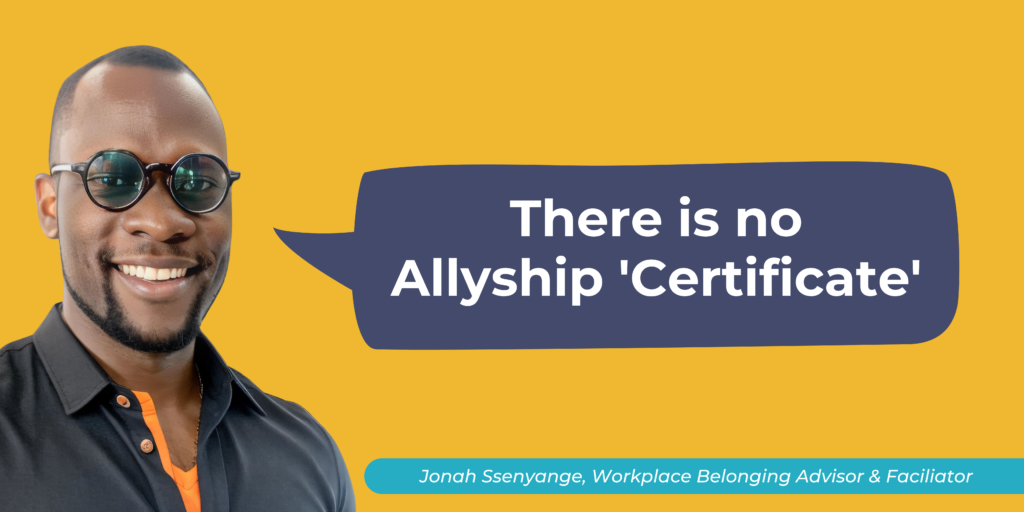

There is no allyship certificate, but there are three core learnings I think you should know.
When an organization wants to achieve diversity and inclusion goals, allyship is essential since success depends, in part, on people’s understanding of how privilege and power may favourably or adversely impact everyday workplace interactions.
As there are many ways for power to manifest or marginalization to persist, so too can allyship within and beyond an organization.
What is allyship?
Allyship is the act of unlearning and relearning by someone who is in a position of privilege and power when aiming to work in solidarity with equity-deserving groups.
Allyship is not an identity or a noun. Instead, it is a verb, an action – a lifelong process of building relationships based on trust, consistency, and accountability with marginalized individuals or groups. So it refers to those actions, behaviours, and practices.
Your allyship cannot be labelled as allyship by you; it must be acknowledged by the people you desire to form an ally with. Allyship is not about “paving the way” but rather being alongside those you are in solidarity with.
It’s important to understand that allyship is not about ‘saving’ people. If you find yourself motivated by a sense of ‘feeling good about yourself’ I urge you to reflect on why. Nova Reid says it best:
“We’ve been revolting, rescuing ourselves and rising up, in spite of systemic oppression, for centuries. We’ve had no choice but to, for our own self-preservation and survival. What we really need white people to do is consciously, consistently and intentionally unlearn racism.”
– Nova Reid, Activist, TED speaker, podcast host and author, on a purpose-driven mission to improve racial justice
As our friend and Strategic Advisor to P4G, Brady Paul shares in his blog “An ally is someone who inserts themselves at their convenience. An accomplice implicates themselves in my journey.”
To me, Brady’s definition of accomplice takes allyship to another level by learning from and listening to Black, Indigenous, People of Colour and other equity-deserving groups, advocating for them under their direction, and looking inward to recognize your own biases and privileges.
To truly show up for those you stand in solidarity with, remember to:
Centre the Impacted
When seeking allyship with someone, ask yourself, “Am I supporting the impacted person as they want to be supported?” instead of helping in a way that feels convenient, important or most comfortable for me?
Intent does not trump impact
There is a difference between your intent and your impact. Your intent is who you are; the impact is what you did. Your impact may not always reflect who you are, but you are still responsible for it. So when someone tells you that you have caused harm, it’s vital to consider your impact rather than your intent.
Follow the lead
Follow the lead of those you seek allyship with. Respecting the first voice – those most impacted by an issue – shows that we understand who is most knowledgeable about the lived experience of the marginalized.
Ask yourself
- What was your source of information for that perspective?
- If it’s not genuinely citing or referring to those with First Voice, ask yourself if it is appropriate for you to be speaking at this time when there are people with lived experience in the room who are the most knowledgeable on the topic.
The journey of allyship is one founded on understanding and authenticity.
Although each person’s journey is unique, we are better and stronger when we work in solidarity. Encouragement of open, honest discussion and understanding one’s privilege is an opportunity and duty to be an active ally.
We’d love to hear your own thoughts on what it means to be an ally. Comment below! Found this interesting? Follow along at our blog page here, to hear from more P4G contributors.

